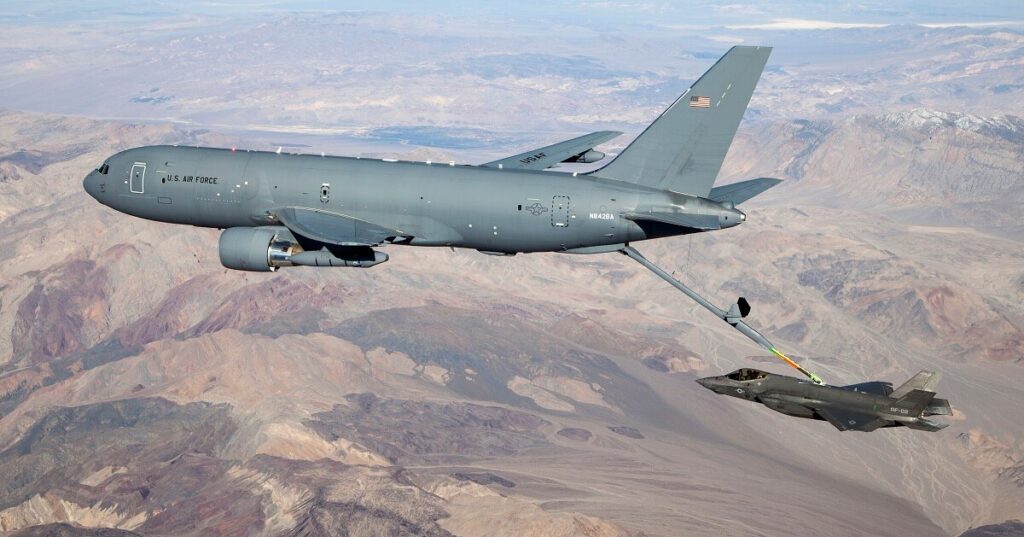
A KC-46 refuels an F-35
WASHINGTON: Beleaguered Boeing Co. has pushed out CEO Dennis Muilenburg in an attempt to recover from a string of high-profile program failures. But it is unclear if a change at the top will fix what some close observers of the company say are the root causes of the company string of problems.
Richard Aboulafia, long-time aviation business analyst at Teal Group, says Boeing seems to be suffering from a systemic failure: a dysfunctional relationship between the management and engineering sides of the house that affect both military and civil programs.
“I think they’ve got big issues in communications between engineering and management,” he told me today. “The one consistent thread between commercial and military is that they’ve come to regard engineers as another asset to be leveraged.”
While Muilenberg is gone, Boeing has not swept out its core management team. The board simply promoted its chair, David Calhoun, to the CEO slot and rotated Lawrence Kellner into the slot of non-executive chairman of the board.
We asked Boeing for reaction to Aboulafia’s critique. This is what they said: “We’re remaining focused on our customers and meeting our commitments.”
The latest disaster for Boeing was the failure of the much-touted Starliner space capsule to reach the International Space Station last Friday due to a clock problem that deleted its fuel, and forced it to return to Earth after only two days in orbit. The company, and NASA Administrator Jim Bridenstine, downplayed the incident, but given the high stakes as NASA seeks to regain America’s ability to launch humans into space the fact of the failed test is a black eye to both.
The Starliner problem followed hard on the heels on the firm’s major announcement last Monday that it was shutting down the 737 Max airliner production line in January. As reported by David Schaper on Dec. 12, that decision came after Federal Aviation Administration (FAA) chief Stephen Dickson warned Muilenburg to back away from Boeing’s push to speed the 737 Max’s return to service following crashes in Indonesia and Ethiopia that killed 346 people.
Boeing did just have a win on the military side of its operations, with the Air Force last Wednesday lifting the three-month-long ban on KC-36 cargo and personnel flights. The lock-down was piqued by the discovery that cargo restraints came open of their own accord during test flights. that problem came, of course after years of delays and large cost overruns on what was supposed to be a low-risk program.
Aboulafia said the troubles stemming from “under-prioritizing engineering resources” have affected military programs as well as the commercial efforts.
(As an aside, it might be noted that Muilenburg served as president and chief executive officer of Boeing Integrated Defense Systems — later renamed Boeing Defense, Space & Security — from September 2009 until 2015.)
In particular, Aboulafia explained, that approach has led Boeing to contract out system design on many defense programs. These include the firm’s losing bid for the Long Range Strike Bomber (LRS-B, now the B-21 being built by Northrop Grumman), which was a Lockheed Martin design, he said.
Similarly, the T-7A Red Hawk trainer “was largely a Saab design,” and the “MH-139 leveraged a Leonardo helicopter.”
Ironically, Aboulafia added, the “KC-46, you could argue, was their one big win, leveraging a Boeing design from the 1970s and then badly mangling execution.”
From F-16s to NATO, Argentina’s moves tilt West, but ties to China to last
There are flashpoints to watch as Argentina navigates its future between the polar attractions of Washington and Beijing, including future defense deals and a deep space facility.


























